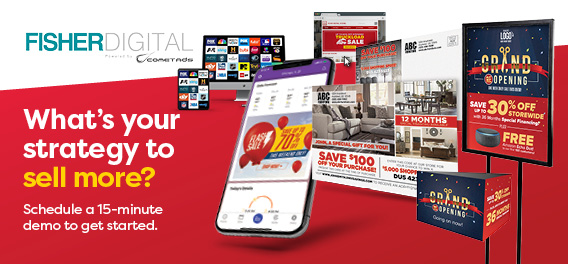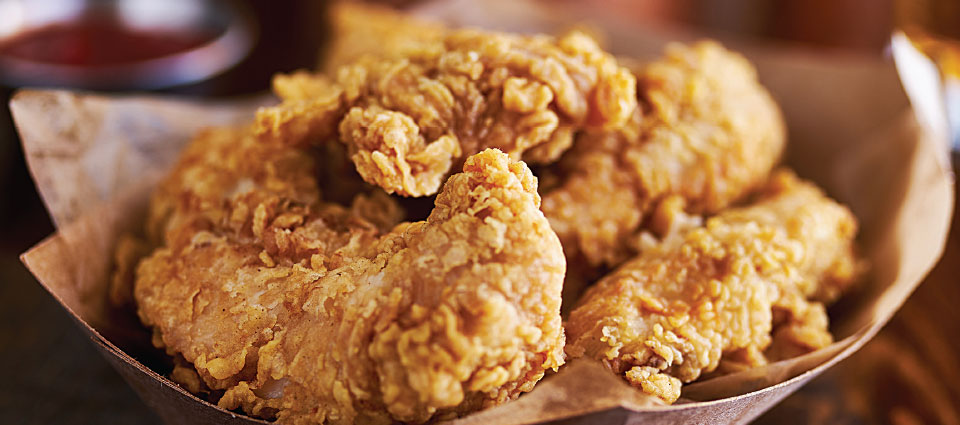9 Indispensable Marketing Lessons from KFC
September 03, 2019Kentucky Fried Chicken (KFC) deploys creative marketing promotions to sell its chicken. Perhaps you’ve heard of some of its more outlandish initiatives, like the Col. Sanders Bearskin rug contest, the KFC RoboCop commercial and its crowdfunding campaign.
Examining these memorable marketing promotions led our marketing team to uncover 9 indispensable marketing lessons for marketers. These lessons are useful for businesses both small and large. Get ready to get inspired to launch your next marketing promotion!
Lesson #1: Weird Can Work
KFC finds unusual ways to integrate its brand in consumers’ lives. Here’s a brief roundup of a few of our favorite weird promotions that KFC launched:
• KFC released its Chickendales video featuring real Chippendales dancers for Mother’s Day 2019, which is its busiest day of the year. Runner-up for our favorite Mother’s Day promotion is the romance novella “Tender Wings of Desire” for Mother’s Day 2017.
• KFC released limited-time merchandise in 2017, including clothing, jewelry, a Col. Sanders pillowcase and framed KFC prints.
• Its 11 herbs and spices scented fire log, which was released in time for the December 2018 holidays.
• KFC gave away free bowl hairstyle cuts at a Brooklyn hair salon to promote its limited-time $3 KFC Famous Bowls in January 2019.
• KFC released a limited-time FunkoPop collectable of Col. Sanders himself, which sold out in a reported 11 minutes in January 2019.
There are three noteworthy points about these examples. First, all these promotions were tied directly to either a product or the company’s branding. Second, all these promotions were limited-time only offers that were strategically released to coordinate with a specific purpose, like treating Mom to a spicy romance story for Mother’s Day. Lastly, all these weird yet effective tactics generated a lot of media coverage, further enhancing KFC’s brand awareness.
Lesson #2 Stand Out from the Crowd
A lot of places sell fried chicken. And while some national competitors like Popeyes Chicken are creative, (like Popeyes’ emotional support chicken and its Mardi Gras bead chicken boxes), KFC innovates with its promotions and channels to differentiate itself.
A commercial that aired in 2019 showed KFC hiring RoboCop to protect its secret recipe as the actual recipe was relocated to the Bahnhof Underground Data Center. What makes this commercial a standout example to take marketing inspiration from?
It’s memorable and creative. But more importantly, it’s on brand. Just about everyone who has heard of KFC knows that its recipe includes 11 herbs and spices. But the recipe itself remains a closely guarded trade secret. Playing this up in an ad was a clever way to stand out from other fried chicken sellers.
KFC has figured out how to differentiate itself from its competitors and uses those differentiating factors in its marketing messaging. That is the real takeaway from its RoboCop commercial.
Lesson #3: Designate a Point Person
KFC recently appointed its first chief communications officer, who oversees the development of the company’s business narrative, leads all internal and external communications, public affairs and social purpose efforts.
Although not every company is large enough to need a point person manage those same areas at the same scale as KFC, it IS important to designate who is in charge.
That point person must be at the ready to respond to any emergencies that pop up (reports of product contamination in the supply chain, for example). That point person must also be the one to keep marketing and messaging efforts on track, coordinate efforts from contributors/team members and ensures tasks get done.
The marketing takeaway here is to identify the person who will take responsibility for safeguarding the company’s image.
Lesson #4: Foster Customer Participation
You might wonder why a company that earns over $49 billion in sales*(see note at the end of this blog post) turned to crowdfunding to finance such innovative KFC ideas as a Col. on Ice Ice-Skating Show and the Kentucky Fried Hot Tub.
Launching the KFC Innovations Lab on Indiegogo invites audience (customer) participation in a unique way. It’s literally asking people to buy into KFC’s latest weird promotional ideas via crowdfunding.
The innovation lab is also seeking funding for a smart cane remote TV control, a necktie with built-in location-tracking technology and a (durable) cardboard picnic table with a cardboard Col. Sanders to hold your KFC bucket of chicken. By the way, each of these Indiegogo campaigns did receive some financial backers.
In honor of Valentine’s Day 2019, KFC held a contest where customers had three ways to compete to win three prize packages that included a Col. Sanders bearskin rug. There was a digital image challenge, a storytelling challenge and a drawing duel. Like the Indiegogo effort, this contest hinges on customer participation in a personal way (donating one’s personal funds and using one’s creative talents).
What makes both of these ideas so genius is that they give their audience members a tangible stake in the effort. While it is probably not feasible for every company to create its own promotional bearskin rug to give away, it is feasible for companies to find opportunities for their customers to make some kind of contribution (we advise caution if asking for monetary contributions).
Lesson #5: Use Multiple Channels
KFC does not rely on one channel to communicate with its customers. It has an active presence on 4 social media channels (Facebook, Instagram, Twitter and YouTube). It maintains its website, utilizes email marketing and has a mobile app (in select markets). The KFC Colonel’s Club app was ranked as the 5th most popular app in the U.K. in 2019 (in terms of number of sessions per app).
KFC doesn’t try to stretch itself with a presence on more social media sites (like Pinterest and Tik Tok). Instead, it manages its presence on the sites that make the most sense for their audiences.
KFC also uses its website as another way to communicate directly with its customers. It has a blog titled “Chickin Chattin’” that is updated about once per month. It tackles issues like how KFC chickens are raised, talks about new (food) products and why hungry diners may find that KFC ran out of chicken.
Customers can opt in to join The Colonel’s Club to receive email offers and deals. It’s an easy sign-up process (4 fields to fill out including email) that is clear about what you get when you sign up (deals/offers and notification when your local KFC launches delivery).
The key takeaway here is that KFC leverages multiple channels effectively. Looking for deals? Sign up for the email. Read amusing blurbs about the company’s food and marketing stunts (like the Indiegogo campaigns)? Check their Facebook or Twitter. Browse an odd assortment of images that showcase the food and Col. Sanders? Go to Instagram. KFC demonstrates that different channels need different content.
Lesson #6: Communicate Consistently Across Channels
Without careful planning and execution, maintaining a presence on multiple channels can lead to mixed and confusing messages.
KFC uses the same cover image and company description on all 4 its social media channels. KFC uses its signature red and white stripes, Col. Sanders and it logo consistently across its channels. Its messaging is also consistent across its channels.
If your company is going to use more than 1 channel to communicate with consumers, make sure your point person is paying attention to maintaining your company’s messaging and branding on every channel.
Lesson #7: Board the Sustainability Train
KFC announced its global commitment that all plastic-based, consumer-facing packaging will be recyclable or reusable by 2025. As we mentioned in Lesson #5, KFC has addressed its chicken sourcing in its company blog on its website.
These two examples show how KFC has boarded the sustainability train. Like many companies, KFC is launching initiatives and finding ways to show consumers how they are working to improve the environment to meet the growing consumer interest in sustainability.
73% of consumers said they would definitely or probably change their consumption habits to reduce their impact on the environment. (You can read more about sustainable shoppers in our Sustainability Rising blog.)
The lesson here isn’t to launch a large-scale sustainability effort, but rather implement what eco-friendly practices you can and use your marketing channels to share them with your customers.
Lesson #8: Tone it Down (Sometimes)
We’ve spent a lot of real estate in this article discussing KFC’s widely publicized (and quirky) promotions. But not all of its efforts were announced or even noticed (for some time).
KFC is following 11 Twitter accounts—6 people named Herb and 5 spice girls. It is unknown how long KFC executed this subtle marketing tactic in honor of its secret blend of 11 herbs and spices (it launched its Twitter account in 2008 but a Twitter user noticed this in 2017).
After the Twitter user noticed and shared this finding on Twitter, KFC sent him a gold-framed portrait of the Twitter user being carried by Col. Sanders.
Although this garnered media coverage after the Twitter user pointed it out publicly on Twitter, the tactic was executed without fanfare.
The takeaway? Not every promotion needs to be outrageous and widely publicized. Sometimes a quiet, smaller scale tactic can make quite an impact.
Lesson #9: Own Up to Your Mistakes
KFC ran out of chicken at all 900 of its locations in the U.K. and Ireland for 10 days. This caused quite a backlash from customers and media outlets.
Once KFC resolved the issue—caused by a switch to a new distribution partner—they took out a full-page that explained what happened. The ad featured a picture of a KFC bucket with the letters “FCK” and an apology.
The way KFC handled this chicken shortage was brilliant. They could have issued a statement on social media and called it a day. They could have allocated staff to respond to all the online consumer complaints. But they make a huge public gesture that disclosed what happened and why in a humorous but on-brand manner.
Admitting that a screw-up happened is embarrassing. But should it happen at your company, take a page out of KFC’s book and own up to it. Apologize, explain what went wrong and what steps are being taken to remedy the situation. Find the best way to address it with your customers.
*A note on KFC’s sales revenue from Lesson #4: KFC is owned by parent corporation, Yum! Brands, Inc. The $49 billion sales revenue mentioned in Lesson #4 is the total revenue for Yum!, which includes Pizza Hut and Taco Bell. The 22,621 KFC locations in 136 countries accounted for 49% of the company’s total operating profit in 2018 (Taco Bell accounted for 33% and Pizza Hut accounted for 18%).

